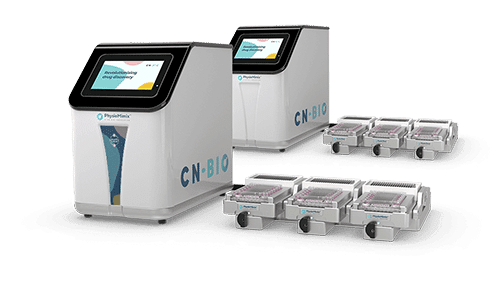Obesity is a global epidemic. Up to a third of the USA’s adult population is now obese and worldwide, the prevalence of obesity has almost tripled since the 1970s. Increased obesity has triggered a wave of serious associated health conditions, notably cardiovascular disease, type-two diabetes and cancers.
Also on the rise and also associated with obesity is Metabolic dysfunction-associated steatotic liver disease (MASLD), alternatively known as non-alcoholic fatty liver disease (NAFLD). The early stage of MASLD, a fatty liver, is relatively harmless and reversible, however, it can progress to Metabolic dysfunction-associated steatohepatitis (MASH), alternatively known as Non-alcoholic steatohepatitis (NASH), where the liver becomes inflamed and fibrotic. Chronic inflammation can lead to cirrhosis, a severe and irreversible replacement of functional liver cells with scar tissue, for which the only current cure is transplantation. NASH is already one of the leading causes of liver transplantation in the USA, however, projections suggest it will soon overtake hepatitis as the predominant cause, thereby becoming a huge economic burden.
In response, a huge amount of research and development effort has focussed on developing anti-NASH therapeutics. Despite this, not one drug candidate has made it through human trials and approved for use. This begs the question – how can we gain a more comprehensive understanding of this disease? How can we more accurately model the human disease? How can we better predict human responses?
A publication from Dr. Michele Vacca (Clinical Research Associate. University of Cambridge), addresses these questions with a “sum is greater than the parts” approach to achieving their research goal of teasing apart the complex, overlapping and multi-faceted inflammatory pathways involved in liver fibrosis to identify key, potentially “druggable”, players in NASH.
Key to developing druggable targets for the treatment of fatty liver disease is a comprehensive understanding of the role that inflammation plays in the progression of MASLD to NASH and cirrhosis. Dr. Vacca’s research focuses on one of the most important signalling pathways in the development of liver fibrosis, the TGFb pathway. TGF. If you are keeping up thus far, the situation is further complicated by the fact that some ligands can activate both canonical and non-canonical branches of the signalling cascade. One such ligand is Bone morphogenic protein 8B (BMP8B). Almost absent in a normal human liver, expression increases with MASLD disease progression, and as such, Dr. Vacca asked the question: what is the role of BMP8B in NASH?
To find the answer, a range of traditional methods were employed, including 2D cell culture and animal models of NASH, however, when it comes to physiological relevance, each approach has its limitations. For example, 2D cell culture models are simple, cost-effective, and convenient but lack “real-life” complexity. Primary hepatocytes cultured in 2D do not retain their identity for long, behaving much more like cancer cells. Such shortfalls can be countered by using animal models to help confirm findings; however, inter-species differences can and do deliver results that lack translatability into humans. To help navigate his way through these challenges, Dr. Vacca looked for a complementary solution to bridge knowledge gaps and confirm discoveries. He found CN Bio’s in vitro human-relevant NASH disease model.
Using CN Bio’s Liver-on-a-Chip approach, (alternatively known as Liver Microphysiological System), primary human hepatocytes may be cultured for up to 4 weeks (although we typically run for 14 days) under constant perfusion without loss of identity. Additionally, multiple human cell types (for example hepatocytes and Kupffer and stellate cells) can be co-cultured to form 3D liver microtissues that more accurately emulate the human liver and its microarchitecture. By challenging the model with fatty acids, a disease state can be induced which mimics human NASH with a high degree of accuracy, providing a suitable system in which to study signalling pathways such as the TGFb/BMP pathway.
The human-relevant results generated using the PhysioMimix NASH Liver-on-a-Chip assay helped Dr. Vacca to confirm prior findings, deliver fresh insights and enable data from traditional techniques to be stitched together to form a more comprehensive understanding of this disease. The conclusions of his research show that BMP8B is a secreted peptide that is absent in normal liver, upregulated in NASH hepatocytes and stellate cells, and that it modulates TGFβ/BMP signalling. BMP8B coordinates the liver wound-healing response, but in NASH it promotes inflammation and fibrosis. As BMP8B is both secreted and disease-specific, it certainly makes for a promising druggable target for anti-NASH therapeutics.
More recently, in December 2023, we were delighted to announce that our PhysioMimix NASH assay was used to provide human-relevant data on compound efficacy to support the initiation of Inipharm’s Phase 1 clinical trial for INI-822. The submission represents the first example of an OOC provider’s data supporting the clinical progression of a drug for a complex metabolic liver disease and demonstrates the transformative potential of these models to provide human-relevant insights within preclinical programs.
Blog updated in 2024.
Adopting our NASH model into your workflow
We have developed a unique product called NASH in-a-box, which is tailored for use with our PhysioMimix® OOC range of microphysiological systems. The kit includes all the primary human cells, media and consumables required to recreate our NASH model in your laboratory. Combined with software-guided protocols (which walk you through the experimental process step-by-step), the kit streamlines the entire workflow, enabling rapid adoption. Alternatively, you can access the model through our portfolio of Contract Research Services. More information can be found here.
To learn more about this exciting research, view the full webinar here!
The Transability of 3D NASH Microtissues To Model Human/murine NASH.

